Turners Beach, Leith and Forth

Turners Beach
Turners Beach
While Tasmania's north-west is famously known for the iconic Cradle Mountain and wilderness adventures, lesser known are its beaches, which are not only among the best in Tasmania, they rival some in states which have built their repulation on their ribbons of clean golden sand.
Turners Beach and Leith are two localities on the shores of Bass Strait that are blessed with superb beaches, serene pieces of beach paradise that are untouched by the masses. Turners Beach and Leith sit on either side of the mouth of the River Forth where it empties into Bass Strait. The beaches are big and wide, with plenty of room for young travellers to stretch their legs and run off some energy. According to the local fishermen, the salmon and mullet run thick and fast in the river mouth of the Forth.
Both settlements are very much residential, but Turners Beach has the most facilities for visitors. Head down the main drag, which follows the line of the beach, and you'll soon come across the essentials - toilets, picnic tables and a cafe for visitos who prefer to dine in.

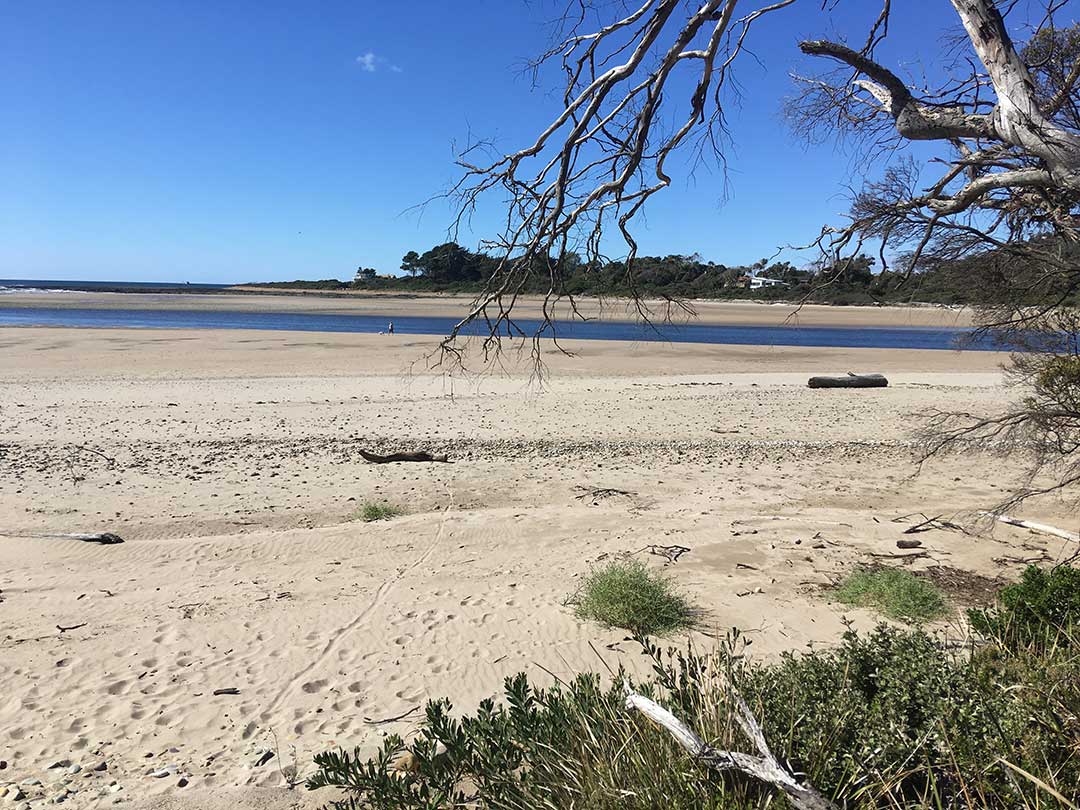
The beach itself is a straight north-northwest-facing strip of sand that extends from Claytons Rivulet to the 100 metre wide mouth of the River Forth. The eastern 100 metres of beach curves into the river mouth, which has a deep channel and strong tidal current flowing though the mouth. A boat ramp is located 100 metres into the river mouth. The beach is backed by a narrow recreation reserve filled with trees, has a central parking are and a picnic and recreation area, followed by a row of beachfront houses and finally a caravan park in the east. There is a viewing platform that is perfect for taking photos.
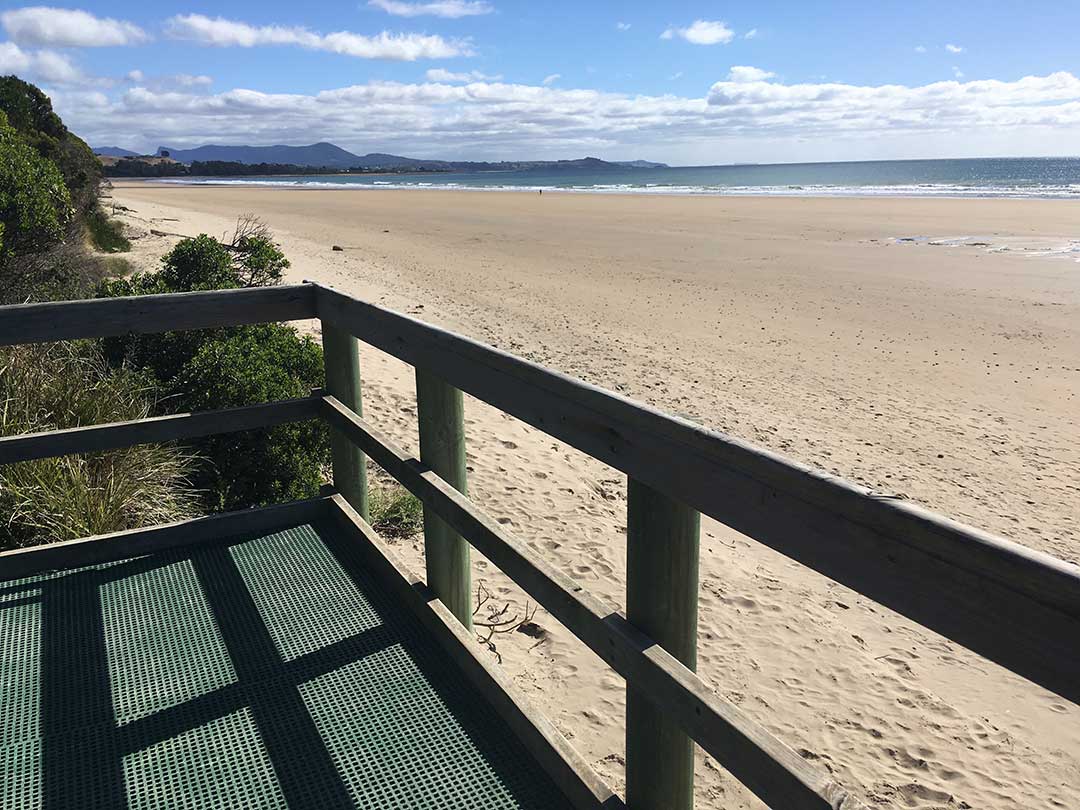
Not many beaches have a river flowing into the sea right through the middle of them, and when they do, as the River Forth does here, some interesting and unfamiliar things happen. Large pebbles, sun-bleached driftwood, seaweed, sponges, cuttlefish and other fascinating offerings are dragged up from the ocean-floor by the tide and dumped around the river mouth. At low tide, the sand is revealed, along with more gorgeous pebbles, shells and sponges - it truly is a treasure-hunter’s paradise. You never know what you’ll find among the driftwood. Even the sound of the waves dragging back across the rocks will probably be something unfamiliar to your ears.

Turners Beach was originally known as Scott’s Beach, named after the Scott family who operated a flour mill on Claytons Rivulet. The township was developed by and renamed in honour of Harry Vincent Glengyle (Glen) Turner on 21 March 1961 who was on the Ulverstone Council and Town Planning Committee at the time.
A little bit of history - James Fenton arrived on the Forth estuary from Ireland in 1839 looking for farm land. Returning in 1840 he erected the first dwelling in the area and along with the Risby family and others, formed the basis of a permanent settlement which later become Turners Beach. Turners Beach was originally known as Scott’s Beach, named after the Scott family who operated a flour mill on Claytons Rivulet. In 1850 the Gables house was built in Gables Park and was originally used as an inn known as The Sailors Return. The inn was de-licensed in 1860 and is now a private residence.
In 1853 The Sailors Return was raided by bushrangers, Dalton and Kelly, who availed themselves of the landlord's whaleboat and rowed it to Victoria. Kelly was not related to the famous Ned but both came to the same end. The pair of boat-nappers were soon caught, sent back to Launceston to stand triel, and subsequent execution.
At the end of the Second World War Turners Beach had no formed streets with only a few sandy tracks through the bush. Thus, the township is quite a recent development having evolved from about 1950 before being officially named as the town of Turners Beach on 21 March 1961. It is suggested that Turners Beach was named after the Turner family who lived in The Gables in the 1920’s. Harry Vincent Glengyle (Glen) Turner on 21 March 1961 was on the Ulverstone Council and Town Planning Committee at the time.
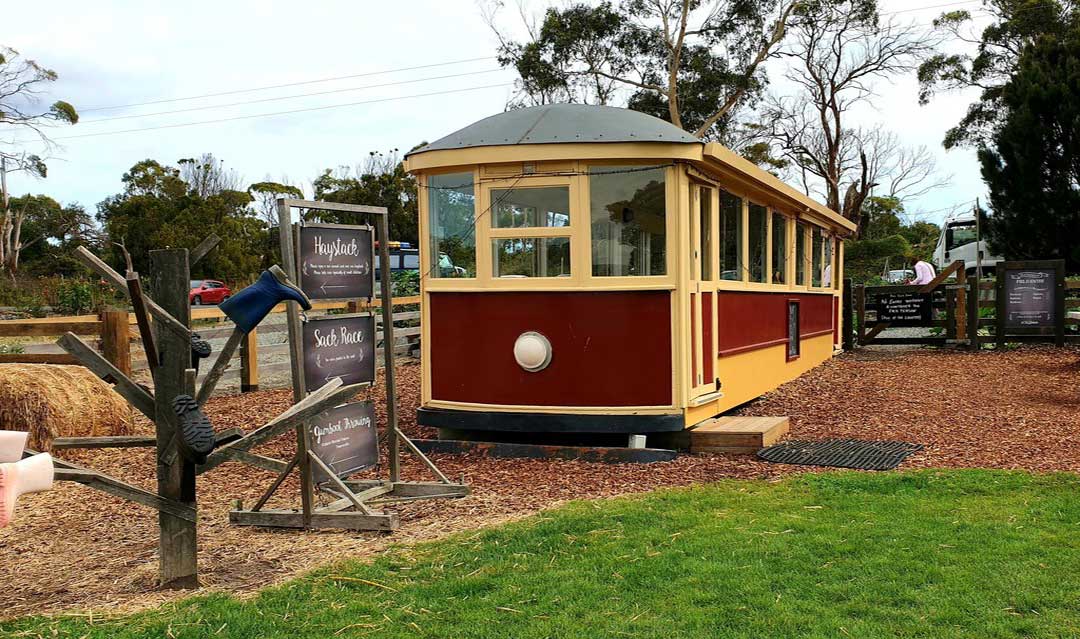
Turners Beach Berry Patch
Turners Beach Berry Patch
Tasmania is famous for its berries, and if you like the thought of picking your own, Turners Beach Berry Patch is a place where you can do this. If you'd rather not pick your owm, there are pre-picked raspberries and strawberries available. Gluten-free options available. The Berry Patch also has a cafe serving zesty berry ice-cream or freshly ground coffee, or you can relax over lunch, morning and afternoon teas, or enjoy a wood fired pizza as we did. Gluten-free options available and you also have an option of indoor and outdoor dining. Open daily from 9am to 5pm, winter opening hours from 10am to 4pm (Closed public holidays and during June). Phone (03) 6428 3967, 0400 173 737.
Turners Beach Twilight Market
Held the last Sunday of every month from 2.30pm to 6.30pm, the Turners Beach Twilight Market features local produce and artisans with a community focus. Location: Esplanade, Turners Beach. Phone 0478 260 315, mobile 0438 849 967.
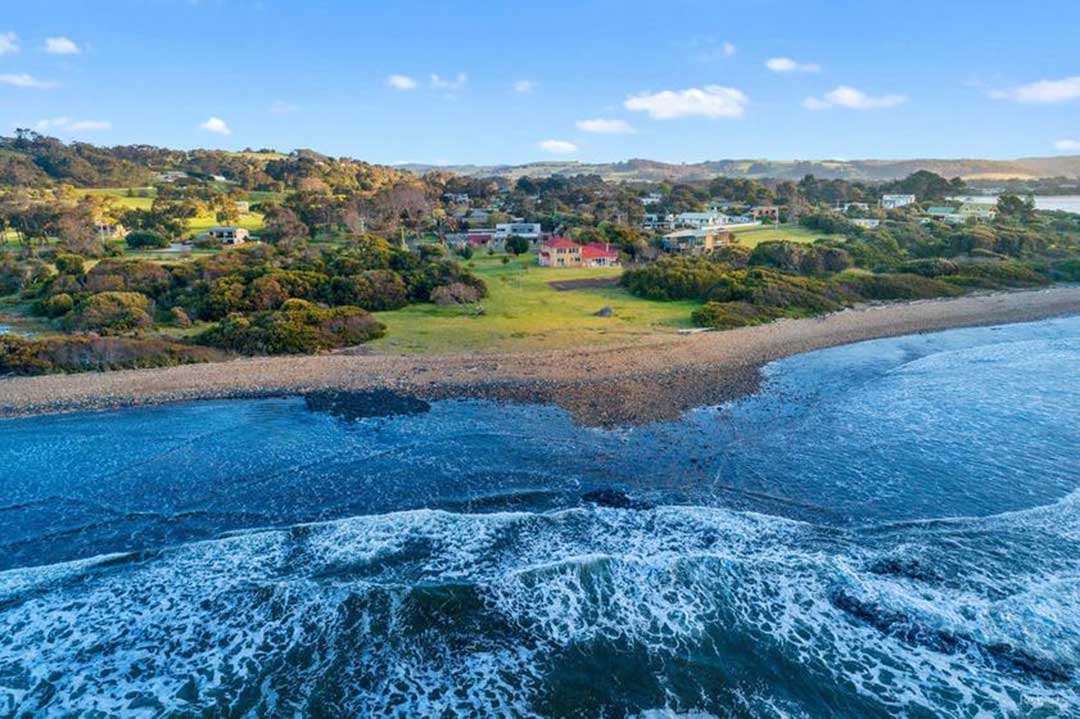
Leith
Leith
The settlement of Leith stands on the opposite side of the mouth of the Forth River to Turners Beach. Across the river between the two are three bridges - one road bridge carrying Bass Highway, and two railway bridges, the oldest of which is no longer in use.
Forth River Railway Bridge
The Forth River Rail Bridge, alongside Bass Highway at Leith, was built in 1885, making it one of the oldest movable bridges in Australia. The bridge has eight metal girder spans totalling 135.4m and this is quite substantial, but the primary significance is the bridge's metal girder swing span, 2 x 12.8m. Of the movable bridges listed in the Register of Australian Historic Bridges only two existing bridges are older - at Bourke (1878) and (1883). Of these, the bridge at Bourke is a lift bridge and that at Sale, while a swing bridge, has trusses for its primary structural system. The Forth River bridge is therefore the oldest remaining bridge of its type in Australia. It is also unusual for a movable bridge to be designed for railway use only. Most other movable bridges were either road bridges or combined road and rail bridges.
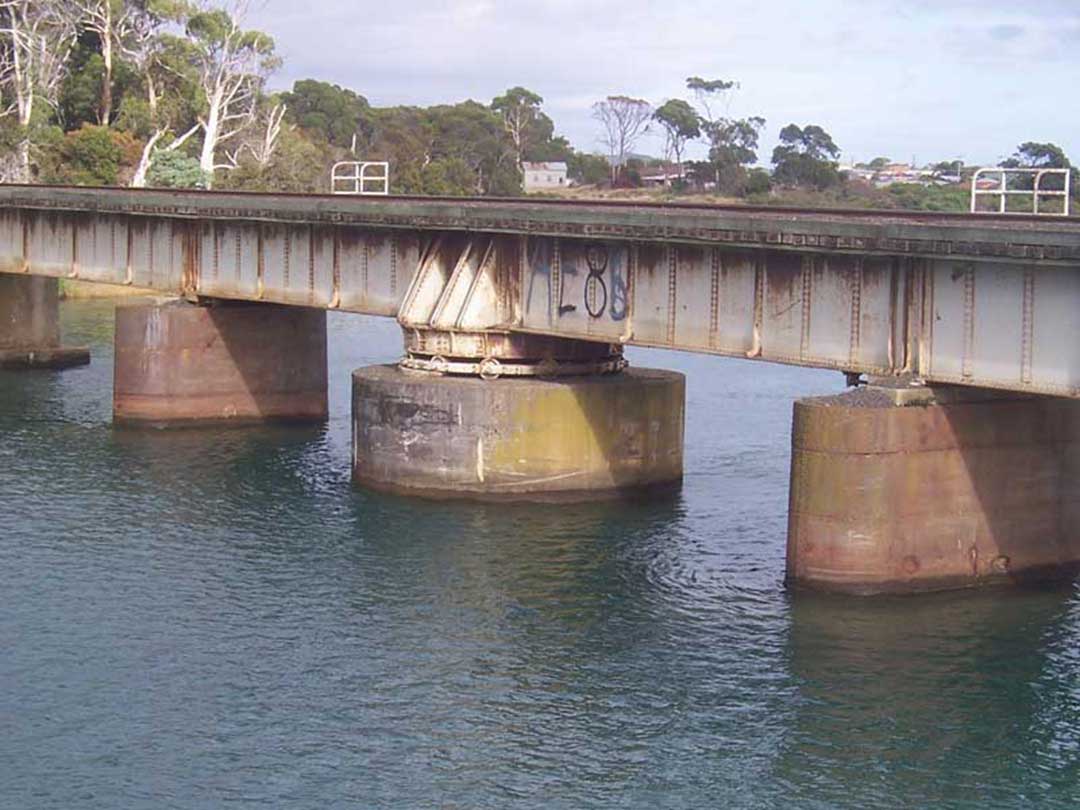
Completed in 1885, the bridge carries a single track railway on metal girders with spans 3 x 18.3, 2 x 12.8 (movable) and 3 x 18.3m, totalling 135.4 m. The ballasted deck is supported on deck-type metal plate girders throughout. Spans 2 and 3, and also 5 and 6 are continuous. The end spans are simply supported. All piers are of concrete and steel, the central pier being circular in plan to support the ring girder of the rotating span.
The bridge was named by the men who built it in 1885 as the Forth Bridge, after its famous namesake cross the Firth of Forth in Scotland.
The bridge was seriously damaged by floodwaters and floating debris on 8th April 1929. Logs swept down the river damaged a pier, bringing down a fixed span of the bridge into the raging waters, though the rails and sleepers on the span remained intact. The cost of repairing the bridge was £17,000. The road bridge alongside the rail bridge sustained minimal damage in the flood.
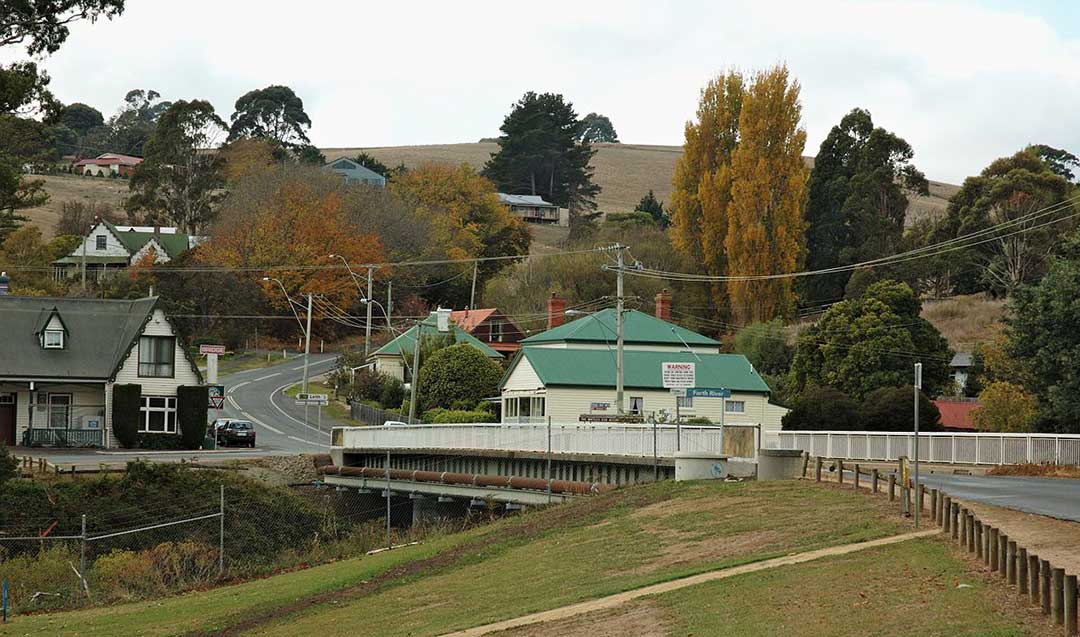
Forth
When it comes to small towns in Tasmania, Forth definitely ranks as one of the most scenic, as well as one of the oldest. Nestled on the banks of River Forth, it is only a 13 kilometre drive from the city of Devonport. Being just 'up the road' from Devonport makes it a great place to kick off your exploration of the state if you are arriving by the Spirit of Tasmania.
Previously known as Hamilton-on-Forth, the village predates the larger settlement of Devonport. James Fenton, a young man of Irish descent came to the Forth estuary in 1839 in search of arable land. Assisted by his hired male companion, he erected the first European edifice in the district, and in 1840 returned to take up permanent settlement.
At the hub of Forth's history is the Historic Bridge Hotel, which is one of the town's oldest buildings and still stands in almost its original form. It was first licensed and opened in 1872, and has managed to retain the old world charm and atmosphere of those times of the past. The building is heritage listed and regarded as a national treasure. It is also regarded as one of Tasmania's leading live music venues, with something always going on musically. It's a great place to grab a country cooked meal, enjoy a beer and a good yarn with your mates or the locals.
Having a population of just 350 people means Forth is the kind of town where everyone knows everybody and you will be made to feel extremely welcome. Many of the original buildings have been replaced since settlement, but there is still a strong sense of history about this old town.
Their village Markets feature many unique stalls with local goods and handmade crafts as well as new goods at bargain prices. It's also regarded as a social meeting point too, with morning teas, lunches and dinners available, so a trip to the markets is a good opportunity to meet and mingle with the locals.
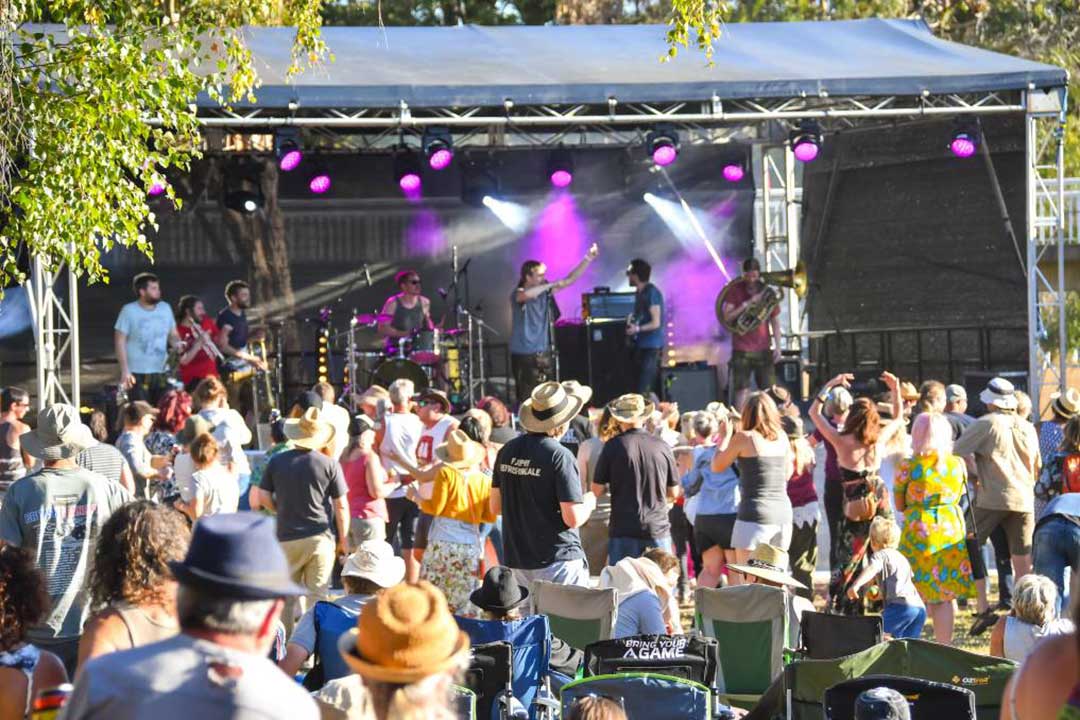
Forth Valley Blues Festival
The village of Forth plays host to the annual Forth Valley Blues Festival. Held on a Saturday in mid-March and located at the Forth Recreation Ground, with entertainment from 12.30pm to 1.30am. The Festial features lots of great blues and roots bands, a bike show and stalls, hot food, bar facilities. There is free camping, and breakfast available Sunday morning. For more information phone (03) 6424 2286 or (03) 6424 9816.

View from Braddons Lookout
Braddons Lookout
Make sure you take the drive up Braddons Road to Braddons Lookout. This lookout offers stunning panoramic views over the Forth Valley and out towards Turners Beach, Leith and Bass Strait. Braddons Lookout was named after Sir Edward Nicholas Coventry Braddon who, after a long career in the British civil service, arrived in Tasmania in 1878, entered state parliament in 1879 and was premier from 1894-99. The lookout is built on the site of Braddon's home.
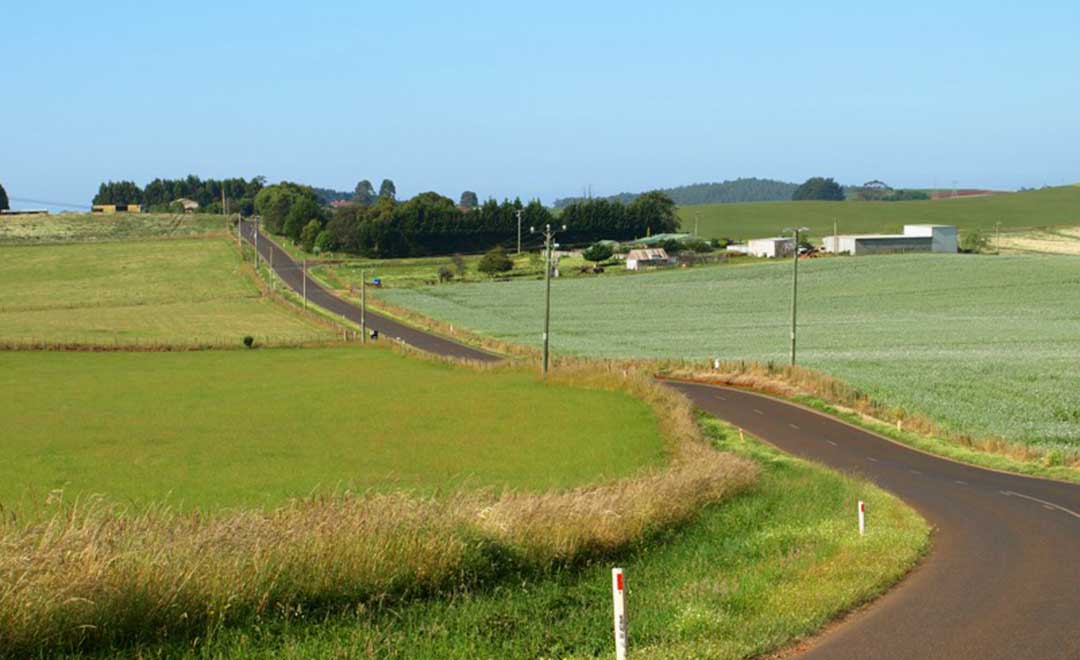
Forth-Sprent Regional Drive
As you enter Forth from Turners Beach, there is a road off to the right signposted to Kindred, a little village about seven kilometres away. Take this road and you'll find yourself on a delightful drive through lush farmlands and rolling hills. Before too long you will arrive at Kindred which, like many regional villages, could best be described as a string of farms scattered on either side of a few buildings that form the nucleus of the community.
In 1865 land here was donated for a church by John Arnold. The first building was constructed of palings and had a shingle roof. By 1866 there were 28 children attending Sunday school, but four years later the Church was closed for worship and relocated to Sprent in 1984. Kindred Community Hall is the most prominent building in the village today.

Kindred got its name because so many of the early settlers became related to one another through marriage. When they first settled there, the hillsides were nearly all covered in heavy scrub and dense bush. The soil is rich, though the country is steep in places and good crops have been grown.
Travel on another 6 km through rolling hills covered in a patchwork quit of multi-coloured field, and you'll reach Spent, a small village that has managed to survive, but only just. Though there are still plenty of farming families in the area to support a school, the village centre is these days a collection of mainly abandoned buildings, silent witnesses to the small but thriving community hub that once existed here. Two vehicles wait to be filled up at the long abandoned service station. Chances are neither of them with be going anywhere any time soon.
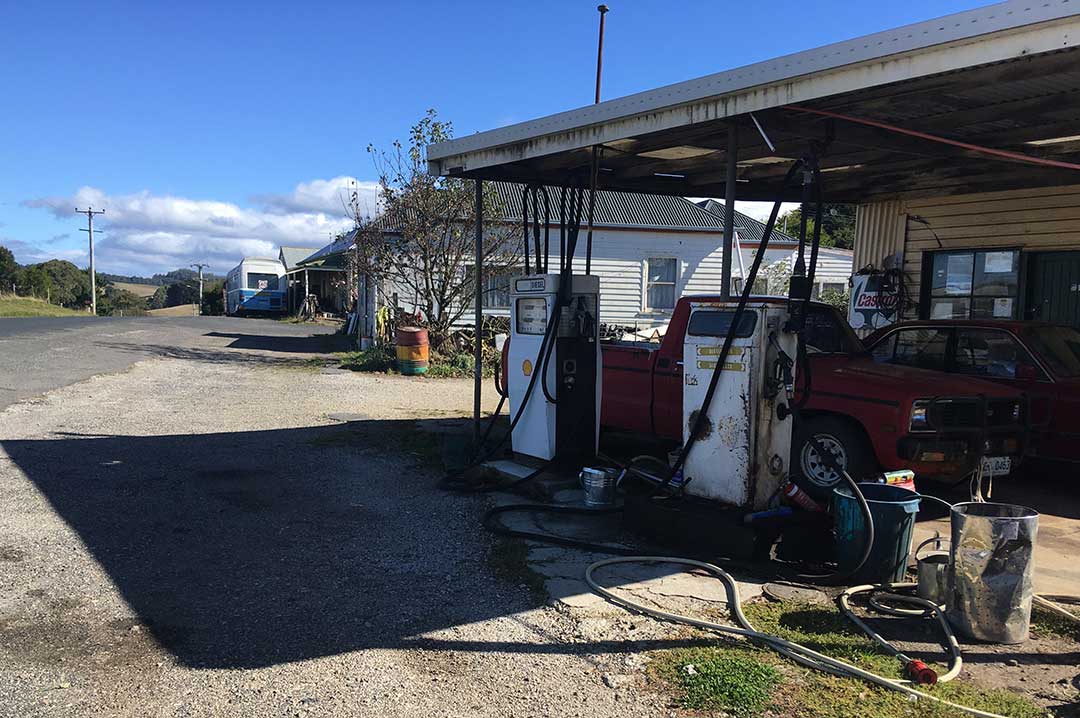
Sprent is named after a Scotsman, James Sprent, one of a team of surveyors who took part in the first trigonometric survey of Tasmania in the 1830s for the production of the first map of the whole island. Upon his arrival in Hobart in May 1830, Sprent had established a "public School for young gentlemen", and later lectured on astronomy at the Mechanics Institute. Sprent became the Surveyor-General in 1857. He died 5 years later, age 55.

Continue travelling north from Spent on Castra Road and you'll be taken back down to the coast and the town of Ulverstone 13km away.
